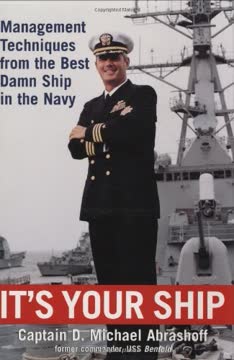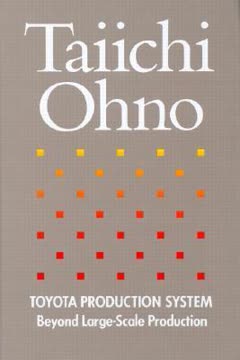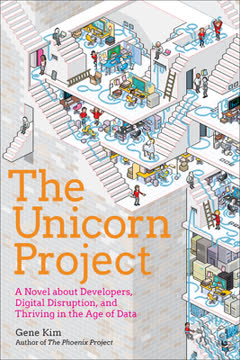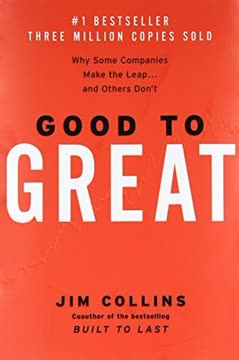Key Takeaways
1. The Toyota Way: A Philosophy of Long-Term Excellence
Achievement of business performance by the parent company through bullying suppliers is totally alien to the spirit of the Toyota Production System.
Long-term thinking. The Toyota Way is not just about tools and techniques, but a comprehensive philosophy focused on long-term excellence. This approach prioritizes creating value for customers, society, and the economy over short-term financial goals. Toyota's success stems from its commitment to:
- Developing people
- Continuously improving processes
- Solving root problems
- Building strong relationships with partners and suppliers
Toyota's leadership consistently reinforces these principles, ensuring they permeate every aspect of the organization. This long-term perspective allows Toyota to weather economic downturns and emerge stronger, as evidenced by its ability to maintain profitability and market share even during challenging times.
2. Continuous Flow: Eliminating Waste and Revealing Problems
If you've got a project that is supposed to be fully implemented in a year, it seems to me that the typical American company will spend about three months on planning, then they'll begin to implement. But they'll encounter all sorts of problems after implementation, and they'll spend the rest of the year correcting them.
Efficiency through flow. Toyota's approach to continuous flow is centered on eliminating waste (muda) and creating a smooth production process. This concept extends beyond manufacturing to all aspects of the business. Key elements include:
- One-piece flow: Moving products through processes one at a time
- Takt time: Aligning production pace with customer demand
- Cellular manufacturing: Arranging equipment and workstations in a sequence
By implementing continuous flow, Toyota:
- Reduces inventory and overproduction
- Improves quality by quickly identifying and addressing defects
- Increases productivity and reduces lead times
- Enhances flexibility to respond to changes in demand
This approach forces problems to the surface, allowing for immediate problem-solving and continuous improvement.
3. Pull Systems: Producing Only What's Needed
The more inventory a company has, … the less likely they will have what they need.
Just-in-time production. Toyota's pull system, also known as kanban, ensures that production is driven by actual customer demand rather than forecasts. This approach:
- Minimizes inventory and associated costs
- Improves cash flow by reducing work-in-progress
- Enhances flexibility to respond to market changes
- Simplifies scheduling and reduces overproduction
The pull system works by using visual signals (kanban cards) to trigger production or movement of materials only when needed by the next process. This creates a chain reaction throughout the supply chain, ensuring that each step produces only what is required by the subsequent step.
- In manufacturing: Parts are produced only when signaled by downstream processes
- In services: Work is initiated only when requested by the customer or next step
- In product development: Design stages proceed based on "pull" from subsequent phases
4. Leveling the Workload: The Key to True Efficiency
Work like the tortoise, not the hare.
Balanced production. Heijunka, or production leveling, is a crucial concept in the Toyota Production System. It involves:
- Distributing production volume and mix evenly over time
- Reducing peaks and valleys in the production schedule
- Minimizing overburdening of people and equipment (muri)
- Eliminating unevenness in the production schedule (mura)
By leveling the workload, Toyota achieves:
- Consistent quality by avoiding rushed production
- Improved efficiency and reduced waste
- Better utilization of resources and equipment
- Enhanced ability to meet customer demand with shorter lead times
This approach may seem counterintuitive to those focused on maximizing short-term efficiency, but it leads to greater overall productivity and stability in the long run.
5. Building Quality into Processes: Stop and Fix Problems
We place the highest value on actual implementation and taking action. There are many things one doesn't understand and therefore, we ask them why don't you just go ahead and take action; try to do something?
Quality at the source. Toyota's commitment to building quality into its processes is exemplified by the jidoka principle, which empowers workers to stop production when they detect abnormalities. This approach:
- Prevents defects from moving downstream
- Encourages immediate problem-solving
- Improves overall quality and reduces rework
Key elements of this principle include:
- Andon cords: Allow workers to signal problems and stop the line
- Poka-yoke: Error-proofing devices that prevent mistakes
- Root cause analysis: Systematic problem-solving using techniques like "5 Whys"
By focusing on building quality into every process, Toyota reduces overall costs and improves customer satisfaction, despite the apparent inefficiency of stopping production to address issues.
6. Standardized Tasks: The Foundation for Continuous Improvement
Use stable, repeatable methods everywhere to maintain the predictability, regular timing, and regular output of your processes. It is the foundation for flow and pull.
Consistency breeds improvement. Standardized work is a cornerstone of the Toyota Production System, providing a baseline for continuous improvement. It involves:
- Documenting the current best practice for each process
- Ensuring consistent performance regardless of who performs the task
- Creating a foundation for kaizen (continuous improvement)
Benefits of standardized work include:
- Improved quality and reduced variability
- Easier training of new employees
- Clear expectations for performance
- A starting point for problem-solving and innovation
Toyota views standardization not as a rigid set of rules, but as a dynamic tool that evolves with each improvement. This approach allows for both stability and flexibility in operations.
7. Visual Control: Making Problems Visible
Use visual control so no problems are hidden.
Clarity through visualization. Visual control is a key principle in the Toyota Way, making the status of processes immediately apparent to all. This approach:
- Facilitates quick identification of abnormalities
- Enhances communication and coordination
- Supports standardized work and problem-solving
Examples of visual control at Toyota include:
- Andon boards: Display the status of production lines
- Kanban cards: Signal the need for parts or materials
- 5S workplace organization: Ensures everything has a visible, designated place
- A3 reports: Summarize complex information on a single page
By making processes and their status visible, Toyota creates an environment where problems cannot hide, enabling rapid response and continuous improvement.
8. Technology that Serves People and Processes
Use technology to support people, not to replace people. Often it is best to work out a process manually before adding technology to support the process.
Human-centric technology. Toyota's approach to technology emphasizes supporting human workers rather than replacing them. This philosophy ensures that:
- Technology enhances rather than hinders human capabilities
- Processes are thoroughly understood before automation
- Investments in technology are carefully evaluated for long-term benefit
Toyota's technology adoption process includes:
- Thoroughly testing new technologies before implementation
- Ensuring technology aligns with existing processes and philosophies
- Prioritizing reliability and flexibility over cutting-edge features
This approach has allowed Toyota to maintain a balance between technological advancement and human skill, resulting in a more robust and adaptable production system.
9. Developing Exceptional People and Teams
We place the highest value on actual implementation and taking action. There are many things one doesn't understand and therefore, we ask them why don't you just go ahead and take action; try to do something?
People-centric organization. Toyota's success is built on its ability to develop exceptional individuals and teams who embody the company's philosophy. This involves:
- Long-term investment in employee development
- Promoting from within to maintain cultural continuity
- Balancing individual excellence with effective teamwork
Key aspects of Toyota's people development include:
- On-the-job training and mentorship
- Cross-functional experience and job rotation
- Encouragement of problem-solving at all levels
- Emphasis on continuous learning and improvement
By developing people who understand and live the Toyota Way, the company ensures its philosophy and practices are sustained and evolved over time.
10. Respecting and Challenging Suppliers
Have respect for your partners and suppliers and treat them as an extension of your business.
Collaborative partnerships. Toyota's approach to supplier relationships is based on mutual respect and long-term partnership. This involves:
- Treating suppliers as an extension of Toyota's own business
- Challenging suppliers to improve and grow
- Providing support and sharing knowledge to help suppliers succeed
Toyota's supplier development practices include:
- Joint problem-solving and continuous improvement activities
- Sharing of best practices and technology
- Long-term commitments that encourage supplier investment
- Regular performance evaluations and feedback
This approach has resulted in a network of highly capable suppliers that contribute significantly to Toyota's overall success and innovation.
11. Go and See: Understanding the Situation Firsthand
Solve problems and improve processes by going to the source and personally observing and verifying data rather than theorizing on the basis of what other people or the computer screen tell you.
Direct observation. Genchi genbutsu, or "go and see," is a fundamental principle of the Toyota Way that emphasizes the importance of firsthand observation and understanding. This approach:
- Ensures decisions are based on actual facts rather than reported data
- Encourages managers to stay connected with the realities of the work
- Facilitates better problem-solving and process improvement
Examples of genchi genbutsu in action:
- Executives regularly visiting production lines and supplier facilities
- Engineers spending time on the shop floor to understand manufacturing processes
- Product developers experiencing products in real-world conditions
By consistently practicing genchi genbutsu, Toyota maintains a deep understanding of its processes, products, and customer needs, leading to more effective decision-making and innovation.
12. Consensus Decision-Making: Thorough Consideration and Rapid Implementation
Do not pick a single direction and go down that one path until you have thoroughly considered alternatives. When you have picked, move quickly but cautiously down the path.
Thoughtful decision-making. Toyota's approach to decision-making, known as nemawashi, involves building consensus through thorough consideration of alternatives. This process:
- Ensures all perspectives are considered before decisions are made
- Builds buy-in and commitment from all stakeholders
- Leads to more robust and well-supported decisions
Key elements of Toyota's decision-making process:
- Gathering input from all relevant parties
- Considering multiple alternatives before choosing a course of action
- Using tools like A3 reports to clearly communicate proposals
- Rapid implementation once a decision is reached
While this approach may seem time-consuming, it ultimately leads to faster and more effective implementation, as potential issues are identified and addressed early in the process.
Last updated:
FAQ
What's The Toyota Way about?
- Management Principles Overview: The Toyota Way by Jeffrey K. Liker outlines 14 management principles that have driven Toyota's success. These principles emphasize long-term philosophy, continuous improvement, and respect for people.
- Cultural Insights: The book explores Toyota's unique culture, highlighting how their success is not just about tools but a comprehensive approach to management and production.
- Practical Applications: It provides insights into applying these principles across various industries, making it relevant beyond automotive manufacturing.
Why should I read The Toyota Way?
- Learn from Success: The book offers a blueprint for achieving operational excellence by understanding Toyota's strategies that have made it a global leader.
- Applicable to Any Business: The principles can be adapted to improve efficiency, quality, and employee engagement in various sectors.
- Cultural Transformation: It provides a framework for transforming organizational culture, essential for long-term success in today's competitive environment.
What are the key takeaways of The Toyota Way?
- Long-Term Philosophy: Emphasizes making management decisions based on long-term goals rather than short-term financial gains, fostering sustainable growth.
- Continuous Improvement: Highlights the importance of kaizen, encouraging all employees to contribute to enhancing processes and products.
- Respect for People: Stresses the importance of respecting employees and fostering a culture of teamwork and empowerment, leading to higher morale and productivity.
What is the Toyota Production System (TPS)?
- Lean Manufacturing Framework: TPS is a lean manufacturing framework focusing on eliminating waste and improving efficiency.
- Key Principles: Built on principles like just-in-time production, jidoka, and continuous flow, creating a responsive and efficient manufacturing environment.
- Cultural Integration: TPS is deeply embedded in Toyota's culture, encouraging employees to take ownership of their work and continuously seek improvements.
How does The Toyota Way define continuous improvement (kaizen)?
- Incremental Changes: Kaizen involves making small, incremental changes to processes over time, allowing organizations to adapt and evolve without major disruptions.
- Employee Involvement: Emphasizes the involvement of all employees in identifying areas for improvement, fostering a sense of ownership and accountability.
- Structured Process: Uses tools like the five-why analysis to identify root causes of problems, ensuring improvements are based on thorough understanding.
What is the concept of genchi genbutsu in The Toyota Way?
- Go and See: Genchi genbutsu translates to "go and see for yourself," emphasizing firsthand observation in understanding problems.
- Deep Understanding: Encourages managers to observe processes in person to gain a deeper understanding and identify root causes of issues.
- Cultural Significance: Promotes a mindset of inquiry and continuous learning, empowering employees to take initiative in problem-solving.
How does The Toyota Way approach employee empowerment?
- Involvement in Decision-Making: Encourages employees to participate in problem-solving and decision-making processes, leading to a sense of ownership.
- Training and Development: Invests in training employees to understand the processes and principles of the Toyota Way, enabling effective contribution.
- Standardized Work: Establishes standardized tasks, providing clear guidelines that empower employees to identify areas for improvement.
What role does leadership play in The Toyota Way?
- Developing Leaders: Stresses the importance of growing leaders who understand the work and embody the Toyota philosophy.
- Consensus Building: Involves building consensus among team members before making decisions, ensuring all perspectives are considered.
- On-the-Floor Engagement: Leaders are expected to spend time on the shop floor, engaging with employees and understanding processes.
How does The Toyota Way address supplier relationships?
- Partnership Approach: Views suppliers as partners and invests in their development, fostering mutual respect and continuous improvement.
- Challenging Suppliers: Challenges suppliers to meet high standards while providing support and resources to help them improve.
- Long-Term Relationships: Focuses on building long-term relationships with suppliers, ensuring stability and quality in the supply chain.
What is the significance of jidoka in The Toyota Way?
- Built-in Quality: Jidoka means "automation with a human touch," allowing machines to stop when a problem occurs, ensuring quality.
- Empowerment: Empowers workers to halt production if they notice defects, fostering a culture of accountability and continuous improvement.
- Immediate Problem-Solving: By stopping the line to address issues, Toyota can quickly identify and resolve problems, preventing defects.
What are the 14 principles of The Toyota Way?
- Long-Term Philosophy: Base management decisions on long-term goals.
- Continuous Process Flow: Create flow to surface problems quickly.
- Pull Systems: Use pull systems to avoid overproduction.
- Level Workload (Heijunka): Level out production to reduce waste.
- Build Quality: Stop to fix problems and ensure quality.
- Standardized Tasks: Standardize work to empower employees and improve processes.
- Visual Control: Use visual management to make problems visible.
- Reliable Technology: Use only tested technology that supports people.
- Grow Leaders: Develop leaders who understand and teach the philosophy.
- Exceptional Teams: Build teams that embody the company’s philosophy.
- Respect Partners: Challenge and help suppliers improve.
- Go and See: Understand situations through direct observation.
- Consensus Decision-Making: Make decisions slowly by consensus.
- Learning Organization: Reflect and improve continuously.
What are the best quotes from The Toyota Way and what do they mean?
- "We place the highest value on actual implementation and taking action.": Emphasizes practical application over theoretical knowledge, reflecting Toyota's belief in learning through doing.
- "If some problem occurs in one-piece flow manufacturing then the whole production line stops.": Highlights the principle of jidoka, ensuring quality by addressing issues immediately.
- "The slower but consistent tortoise causes less waste and is much more desirable than the speedy hare.": Advocates for steady, consistent work over erratic, high-speed production, minimizing waste and maximizing quality.
Review Summary
The Toyota Way receives high praise for its insights into Toyota's management principles and lean manufacturing techniques. Readers appreciate the book's practical applications beyond just manufacturing, with many finding value for general business and personal improvement. The 14 principles are seen as a comprehensive guide to creating an efficient, quality-focused organization. Some readers note the book can be dry or repetitive, but most find it enlightening and transformative. Many express newfound respect for Toyota and its approach after reading.
Similar Books








Download PDF
Download EPUB
.epub digital book format is ideal for reading ebooks on phones, tablets, and e-readers.







